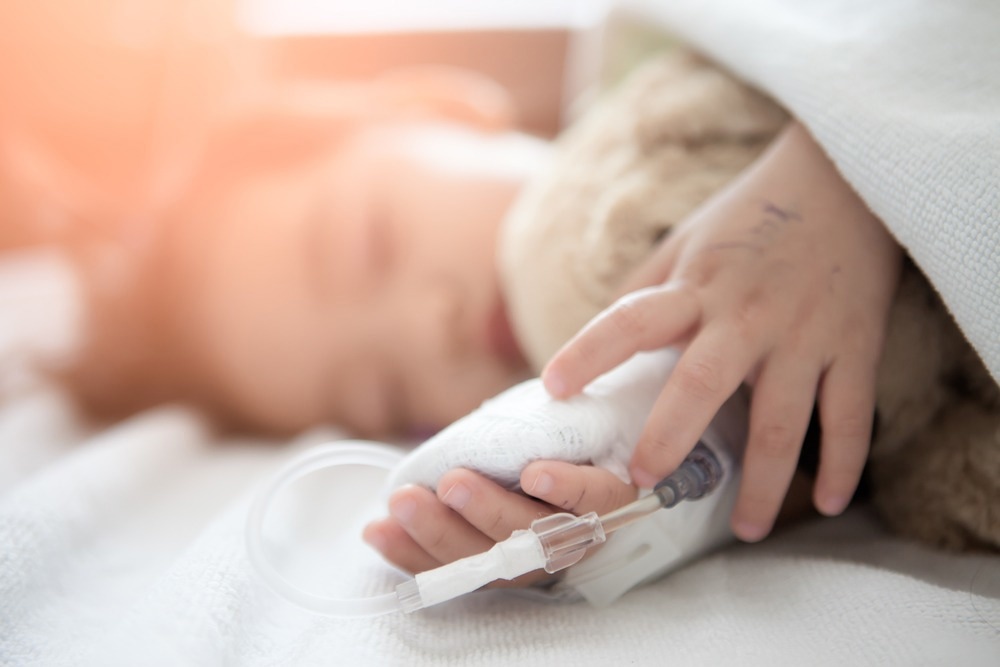In a recent study published in Pediatrics, researchers assessed the prevalence of neurologic complications in children hospitalized with coronavirus disease 2019 (COVID-19).
Background
More than 13 million COVID-19 cases in adolescents and children have been reported in the United States by April 2022. Recent reports indicate that around 1.5% of pediatric COVID-19 patients were hospitalized. Dehydration, gastroenteritis, pneumonia, and respiratory failure are the most common COVID-19-associated complications. Neurologic manifestations of severe acute respiratory syndrome coronavirus 2 (SARS-CoV-2) infection were reported early in the COVID-19 pandemic.
Of late, various studies have shown that children with acute SARS-CoV-2 infection also develop neurologic complications and multisystem inflammatory syndrome (MIS-C). Studies assessing the COVID-19-associated neurologic manifestations have been limited by sample sizes, non-evaluation of age-based differences, conflicting outcome definitions, and the rapid evolution of SARS-CoV-2, which could influence the magnitude and spectrum of neurologic complications.
About the study
In the present study, researchers evaluated the prevalence of neurologic complications associated with COVID-19 in hospitalized children in the US and determined the associated risk factors and clinical outcomes. They included children aged two months to 18 years admitted to a Pediatric Health Information System (PHIS) hospital with a primary or secondary diagnosis of COVID-19.
The authors identified a priori risk factors based on prior studies in the pediatric population, which included age, ethnicity, race, chronic neurologic conditions [as per the pediatric complex chronic conditions (CCCs) classification system 2], and non-neurologic CCCs, among others. The primary study outcome was a neurologic complication, viz., the presence of an International Classification of Diseases, Tenth Revision, Clinical Modification (ICD-10-CM) code during hospitalization.
Neurologic complications included encephalitis, encephalopathy, febrile or non-febrile seizure, aseptic or bacterial meningitis, and brain abscess. Subjective neurologic complications like fatigue, headache, or dizziness were not included in the outcome definition. The secondary outcomes included hospital length of stay (LOS), admissions to ICU, ICU LOS, readmission within 30 days, in-hospital death, and hospitalization-associated costs.
Chi-squared tests were performed for bivariate analyses between those with and without neurologic complications. Multivariable logistic regression was used to evaluate factors associated with neurologic complications. Adjusted odds ratios for each risk factor were computed using generalized linear mixed effects models.
Findings
The study population comprised 15,137 hospitalized patients with COVID-19. Of these, 82.1% had a primary diagnosis of COVID-19, and the remaining had a secondary diagnosis. Most were males (52.5%), aged 12 to 18 (40.6%), and had government insurance (65.2%). During hospitalization, most patients received dexamethasone or remdesivir. About 37.1% of children had CCCs, and 9.8% had neurologic CCCs.
About 7% of hospitalized patients had neurologic complications; febrile or non-febrile seizures and encephalopathy were the most common, while cerebral infarction, brain abscess, and bacterial meningitis were the least prevalent. ICU admissions, longer ICU LOS, and in-hospital deaths were more prevalent among children with neurologic complications than those without.
Children with neurologic complications had higher hospital costs and more readmissions than those without. Multivariable analyses revealed that a neurologic CCC was significantly associated with higher odds of neurologic complications. Notably, hospitalization during the SARS-CoV-2 Delta-predominant period was associated with reduced odds of neurologic complications.
Other factors associated with lower odds of neurologic complications were non-neurologic CCCs and remdesivir/dexamethasone treatment. The odds of neurologic complications increased as age increased in children with a neurologic CCC.
Conclusions
The authors observed that neurologic complications were common among children hospitalized with COVID-19, occurring in at least one out of 15 hospitalizations. Neurologic complications were associated with elevated risks for admission to ICU, readmissions, in-hospital death, and higher hospital costs than those without neurologic complications.
Neurologic CCCs were associated with increased odds of COVID-19-associated neurologic complications. In contrast, non-neurologic CCCs, the use of dexamethasone/remdesivir, and hospitalization during the Delta wave were associated with reduced odds of neurologic complications.
The reason for the association between lower odds of neurologic complication and SARS-CoV-2 Delta was unclear. Moreover, it could not be verified whether SARS-CoV-2 Delta caused all hospitalizations during the Delta period; however, the variant accounted for more than 90% of infections for most of this period.
Some of the study’s limitations were its retrospective design and the inclusion of freestanding children’s hospitals only. Thus, these findings could not be generalized to the community hospital setting. In summary, the study noted that 7% of hospitalized children with COVID-19 developed neurologic complications associated with worse clinical outcomes and increased resource utilization.
